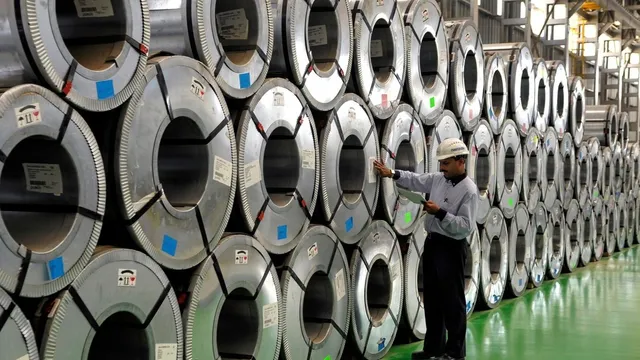India–US Trade Tensions Rise Over Steel and Auto Tariffs NMDC Limited reports a 38% drop in Q4 FY24 consolidated net profit RINL to Raise $23 Million Through Land Sales Amid Crisis

India is working on creating its own direct reduction of iron (DRI) technique based solely on hydrogen, which will be utilised to produce green steel. According to a senior government source, the procedure will be exclusive to the nation and the comprehensive project report that was created in this manner is "under scrutiny" by various ministries.
Industrial-scale hydrogen-iron production, also known as direct reduction of iron (DRI) using hydrogen, is the process of removing oxygen from iron ore using hydrogen rather than high-carbon-emitting fossil fuels, with waste gas recovered as water. The resulting DRI, also known as sponge iron, is put into an electric arc furnace, where electrodes generate a current to convert it into steel.
“This technology is still developing and some of the ministries — such as steel and MNRE — and industry players like integrated steel makers and secondary steel-makers, are working together to get the pilots going on-ground,” the official said, requesting anonymity. Sources aware of the discussions say that a pilot plant using pure hydrogen-brd DRI making is being proposed in a “consortium mode.” It involves integrated (steel) players, secondary players, and CSIR Lab (Council for Scientific & Industrial Research) for developing the technology and necessary IP (intellectual property).
“The Scheme has been approved by MNRE (Ministry of New and Renewable Energy) last month,” the official said.
Hydrogen can be extracted from hydrogen-bearing fuels such as natural gas and biogas and from water using electrolysis. The primary source of hydrogen production is currently natural gas, accounting for around three-quarters of the annual global dedicated hydrogen production of around 70 million tonnes. Less than 0.1% of global dedicated hydrogen production comes from water electrolysis.
So far, there are two prominent avenues of hydrogen usage in steel making, which are tapped in India. The first involves injection of hydrogen in the tuyeres (a nozzle through which air is forced into a smelter or furnace) of the blast furnaces as a partial substitution of pulverized coal injection (PCI). The second process is where mixing or blending of hydrogen with the natural gas or fossil fuel brd reductants in the DRI furnaces is carried out. Hydrogen acts as a partial replacement of the Natural Gas.
Also Read : India begins auction process for Dugda Coal Washery, targeting steel producers Growth in mining sector: Iron ore production hits 275 MMT, limestone at 450 MMT in FY24